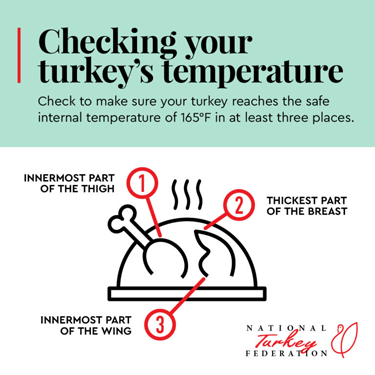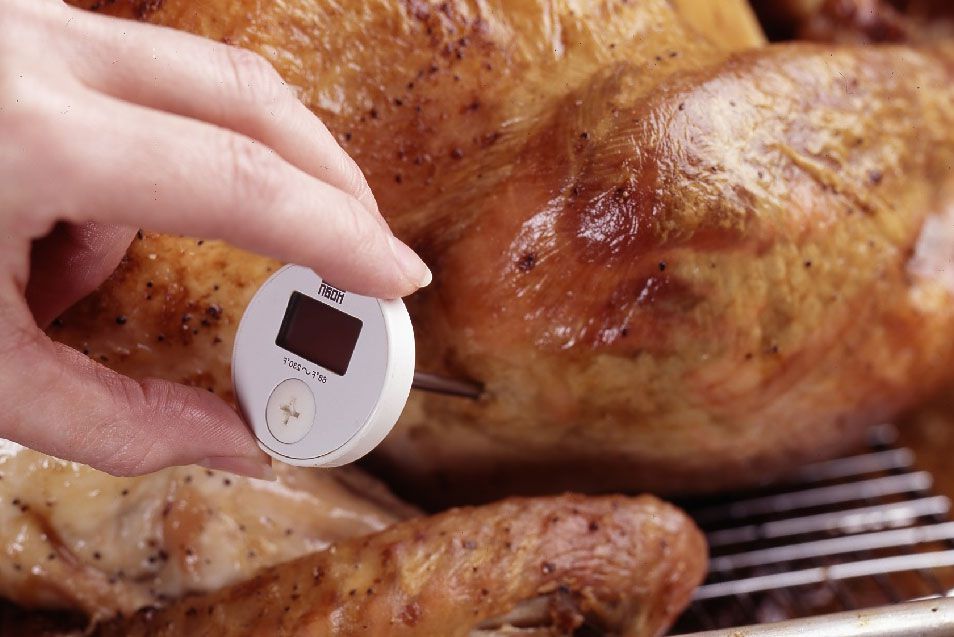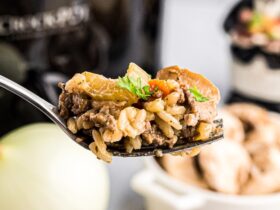Cooking turkey is a special part of many meals. Whether it is for Thanksgiving or a family gathering, turkey is a favorite. But how do you know when it is done? The answer lies in temperature. This article will help you understand when turkey is ready to eat. We will explore the right temperatures, tips, and tricks for cooking turkey perfectly.

Credit: www.seriouseats.com
Why Temperature Matters
Temperature is important when cooking turkey. If the turkey is not cooked enough, it can make you sick. Undercooked turkey can have harmful bacteria. On the other hand, if you cook it too much, the meat can become dry. Finding the right temperature is key.

Credit: www.eatturkey.org
What is the Right Temperature?
The USDA says the safe cooking temperature for turkey is 165°F (75°C). This temperature ensures that the turkey is safe to eat. To check the temperature, you need a food thermometer. A food thermometer is a handy tool that shows the internal temperature of the meat.
How To Use A Food Thermometer
Using a food thermometer is easy. Here are the steps:
- Insert the thermometer into the thickest part of the turkey.
- Make sure it does not touch the bone.
- Wait for the reading to show up.
- Make sure it reads 165°F (75°C) or higher.
Checking the temperature in multiple places is a good idea. This way, you can be sure all parts are cooked well.
Where to Check the Temperature
There are three main places to check the turkey’s temperature:
- The thickest part of the breast.
- The thickest part of the thigh.
- The thickest part of the wing.
Make sure to check all three spots. This will help you be sure the turkey is cooked well.
Signs of a Done Turkey
Besides temperature, there are other signs that turkey is done. These signs can help you know when to take it out of the oven:
- The juices run clear, not pink.
- The legs move easily in the joint.
- The skin is golden brown.
These signs are helpful, but always use a thermometer. It is the best way to be sure.
Cooking Times for Turkey
The cooking time for turkey depends on its size. Here is a simple table to help:
| Turkey Weight | Cooking Time (Unstuffed) | Cooking Time (Stuffed) |
|---|---|---|
| 8 to 12 lbs | 2.75 to 3 hours | 3 to 3.5 hours |
| 12 to 14 lbs | 3 to 3.75 hours | 3.5 to 4 hours |
| 14 to 18 lbs | 3.75 to 4.25 hours | 4 to 4.25 hours |
| 18 to 20 lbs | 4.25 to 4.5 hours | 4.25 to 4.75 hours |
| 20 to 24 lbs | 4.5 to 5 hours | 4.75 to 5.25 hours |
This table gives a good estimate of cooking times. Remember, these times may change. Always check the temperature for safety.
Resting the Turkey
After cooking, let the turkey rest. Resting helps the juices stay inside. This makes the turkey moist and tasty. Let it rest for at least 20 minutes. Cover it loosely with foil while resting. This will keep it warm.
How to Carve a Turkey
Carving turkey can be tricky. Here are some simple steps:
- Use a sharp knife.
- Start with the legs. Cut around the joint.
- Pull the leg away from the body.
- Cut the meat off the bone.
- Next, slice the breast meat. Cut against the grain.
- Serve the pieces on a platter.
Carving turkey is an art. With practice, you can do it well.
Common Turkey Cooking Mistakes
Many people make mistakes when cooking turkey. Here are some common mistakes and how to avoid them:
- Not thawing the turkey properly. Always thaw in the fridge.
- Opening the oven too often. This lets heat escape.
- Not using a thermometer. Always check the temperature.
- Skipping the resting time. This makes the meat dry.
Avoiding these mistakes will help you cook a great turkey.
Conclusion
Cooking a turkey is a fun task. Knowing the right temperature is key. Always aim for 165°F (75°C) for safety. Use a food thermometer to check. Follow cooking times and watch for signs of doneness.
Let the turkey rest before carving. Enjoy the meal with family and friends. With these tips, you can make a delicious turkey every time.
Additional Resources
If you want to learn more, here are some great resources:
- The USDA website for food safety.
- Cookbooks with turkey recipes.
- YouTube videos on turkey cooking techniques.
These resources can help you become more confident in the kitchen. Happy cooking!














Leave a Review